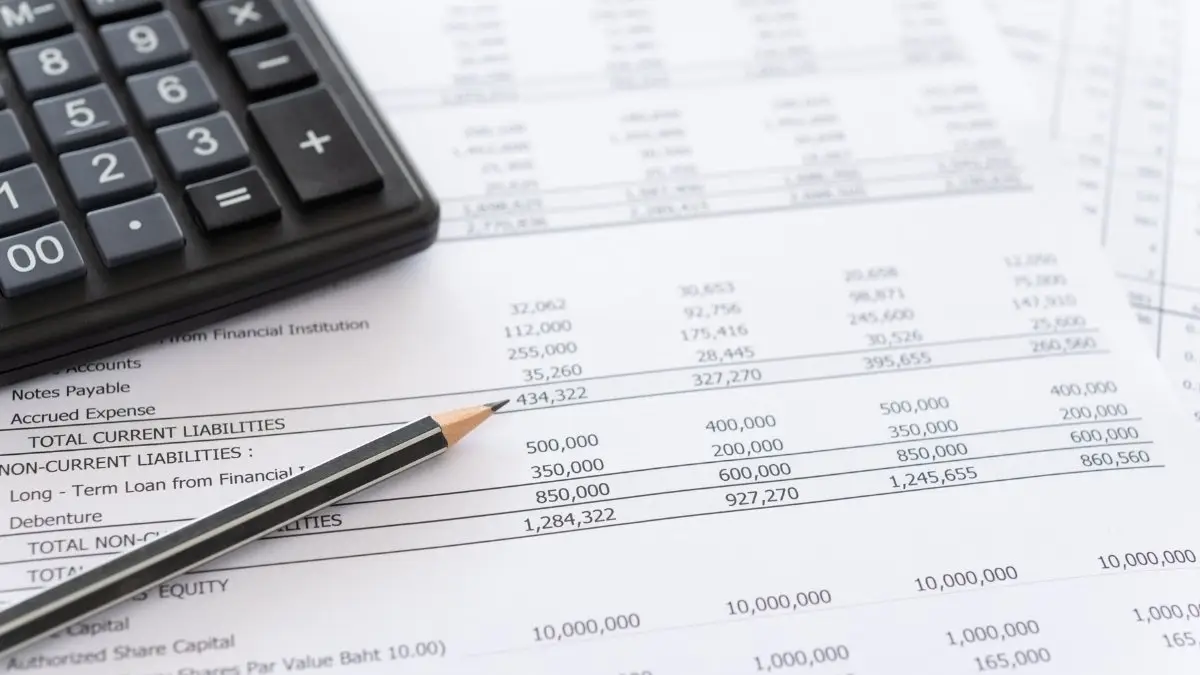My retirement spreadsheet was a masterpiece, a decade of careful planning distilled into perfect, reassuring columns. The target was 2026.
The plan was flawless. But a final due diligence check—one last look under the hood—uncovered a fatal flaw. The problem wasn’t my math; the problem was the world my math was based on had ceased to exist.
A perfect storm of stubborn inflation, a healthcare cost cliff, and market volatility was gathering, aimed squarely at my launch date. This is the story of how my dream of an early retirement collided with reality, and the hard truths I was forced to confront just before pulling the trigger.
The Perfect Storm – First Cracks in the 2026 Foundation

My confidence was rooted in diligence. I wasn’t an impulsive person; I was a planner. So, as the date approached, I began my final due diligence, a last check of the numbers before pulling the trigger.
It was this process that revealed the first cracks in my foundation. What I found was a confluence of economic headwinds, a perfect storm gathering on the 2026 horizon, that threatened to swamp my carefully constructed vessel before it even left the harbor.
The risks were not abstract; they were specific, quantifiable, and aimed directly at early retirees like me.
The Persistent Hum of Inflation
My initial retirement models, built years ago, had factored in a standard, almost quaint, 2% inflation rate. I had watched the inflationary spike of the early 2020s with concern but assumed, like many, that it was a temporary aberration.
As I started digging into the economic forecasts for the coming years, however, a more troubling picture emerged. The consensus was not a return to the old normal, but the arrival of a new, higher baseline.
Econometric models projected that the U.S. inflation rate would trend around 2.6% to 2.9% through 2025 and 2026. This wasn’t a temporary spike; it was a persistent, corrosive force that would systematically erode the purchasing power of my fixed income streams.
The real shock came when I looked beyond the headline Consumer Price Index (CPI). The official numbers, I realized, don’t fully capture the inflation experienced by retirees. Our spending isn’t average; it’s heavily skewed toward categories with the most stubborn price pressures.
Forecasts for 2026 showed food prices rising by 2.7% and services inflation hovering at a painful 3.8%. I started running the numbers on my “dream” budget.
The cost of groceries for our healthy, home-cooked meals, the fuel for our cross-country van trip, the occasional meals out—all were set to rise significantly faster than my plan had allowed.
My personal inflation rate, the one that would actually govern my life, was going to be closer to 4% than the 2% I had banked on. My planned 4% withdrawal rate, once considered the gold standard of safety, now looked dangerously inadequate.
It was my first inkling that my savings might have to last longer, and stretch thinner, than I had ever imagined.
The Healthcare Cost Cliff
The first real tremor that shook my plan to its core came when I investigated health insurance. At 62, I would be three years away from Medicare eligibility, a period often called the “healthcare bridge.”
I had budgeted a reasonable, if substantial, amount for an Affordable Care Act (ACA) marketplace plan. What I found instead was a five-alarm fire.
Across the country, ACA marketplace insurers were proposing staggering premium increases for 2026, with a median hike of 18% and an average of 20%. The sticker shock was immense.
I read stories of other early retirees staring at the same abyss, with one 63-year-old nurse stating simply, “We cannot afford this” after being quoted over $1,000 a month.
But the true catastrophe lay hidden in a legislative detail I had completely overlooked: the enhanced ACA premium tax credits, a lifeline from the American Rescue Plan that capped premiums at 8.5% of household income for millions, were set to expire at the end of 2025.
This wasn’t just a price increase; it was a subsidy cliff. My costs wouldn’t just rise; they would multiply, potentially doubling or tripling overnight.
My first thought was a desperate one: “I just need to make it to 65.” I saw Medicare as a safe harbor at the end of this treacherous three-year channel. But more research delivered the next blow.
That safe harbor was also in the path of the storm. The 2025 Social Security Trustees Report projected that the standard Medicare Part B monthly premium would jump by 11.6% in 2026, from about $185 to $206.50—one of the largest year-over-year increases in the program’s history.
Part D prescription drug deductibles and premiums were also climbing, with base premiums set to rise by 6%.
This was the moment of my “reality check.” Retiring at 62 in 2026 would place me in a uniquely perilous position, a state of healthcare double jeopardy.
I would be forced to navigate a collapsing ACA subsidy system in my pre-65 years, only to be “rewarded” upon reaching eligibility with an unprecedented spike in Medicare premiums.
There was no financial relief in sight. The cost pressures were relentless and compounding. To visualize the disaster, I created a new table, contrasting my original, naive budget with the brutal new reality.
| Year | Age | My Planned Monthly Healthcare Budget | The “2026 Reality Check” Projected Monthly Cost |
| 2026 | 62 | $550 (ACA Plan) | $1,100 (ACA Plan with 20% hike + loss of subsidies) |
| 2027 | 63 | $575 (ACA Plan) | $1,210 (Assumed 10% additional increase) |
| 2028 | 64 | $600 (ACA Plan) | $1,331 (Assumed 10% additional increase) |
| 2029 | 65 | $450 (Medicare) | $650 (Medicare Part B, D, and Medigap with projected hikes) |
The numbers were stark. The healthcare gap alone would create a deficit of over $25,000 in the first three years of my retirement. My meticulous plan wasn’t just flawed; it was a fantasy.
Deconstructing the Dream – A Hard Look at My Own Numbers

Reeling from the external economic shocks, I turned my attention inward. The spreadsheet that had once been my trusted co-pilot now felt like an instrument panel flashing red warning lights.
The dream of early retirement was colliding with the hard math of sustainability. I had to deconstruct my own assumptions, piece by piece, and see if the entire structure was sound.
The Social Security Illusion
With a sense of dread, I logged into my account on the Social Security Administration’s website. My strategy had always been straightforward: claim benefits at 62, the earliest possible age, to get the cash flow started.
It seemed logical—collect benefits for a longer period of time. But looking at the numbers with my newfound skepticism, the logic began to crumble.
For someone like me, born in 1964, the full retirement age (FRA) is 67. The online statement confirmed the brutal penalty for claiming early: my monthly benefit would be permanently reduced by 30% compared to waiting for my FRA.
Conversely, the reward for patience was staggering. For every year I delayed claiming past age 67, up to age 70, the SSA would add an 8% delayed retirement credit to my eventual payout.
This wasn’t a market-dependent return; it was a guaranteed, inflation-adjusted, government-backed increase.
Then I connected this to the economic forecasts from my earlier research. The projected cost-of-living adjustment (COLA) for 2026 was a paltry 2.7%. I did the math that was becoming painfully familiar.
The average Social Security benefit was around $2,009 per month. A 2.7% COLA would add about $54. But the projected Medicare Part B premium increase was $21.50.
Since Part B premiums are deducted directly from Social Security checks for most retirees, that single healthcare increase would consume nearly 40% of the COLA before the money ever hit my bank account. My “inflation-protected” income stream would be losing purchasing power from day one.
It was then that I reframed the entire Social Security decision. Delaying my claim wasn’t about a simple breakeven calculation based on how long I thought I’d live. In the volatile and inflationary environment of 2026, delaying was a strategic purchase of three powerful forms of insurance.
First, it was longevity insurance, providing a much higher, guaranteed income for the rest of my life, protecting me if I outlived my savings. Second, it was market insurance.
By having a larger, more reliable income stream from Social Security, I would need to withdraw less from my investment portfolio, shielding it from the devastating effects of selling into a down market.
Third, and perhaps most importantly, it was spousal insurance. If I were to pass away first, Sarah would receive a survivor’s benefit equal to my full check.
Delaying my claim meant ensuring she would have the highest possible income for the rest of her life. This wasn’t just about my retirement; it was about our shared future.
To make this tangible, I built another table, using the estimated benefit amounts from my own SSA statement. The lifetime difference was impossible to ignore.
| Metric | Claiming at Age 62 | Claiming at Age 67 (FRA) | Claiming at Age 70 |
| Monthly Benefit | $2,036 | $2,908 | $3,606 |
| Annual Benefit | $24,432 | $34,896 | $43,272 |
| Cumulative Benefit at Age 85 | $561,840 | $628,128 | $649,080 |
| Annual Survivor Benefit for Spouse | $24,432 | $34,896 | $43,272 |
The numbers told an undeniable story. Waiting until age 70 would provide nearly $19,000 more per year in guaranteed income and leave Sarah with a far more secure financial future. The idea of claiming at 62 now seemed reckless.
The Market Volatility Trap (Sequence of Returns Risk)
The final pillar of my plan to crumble was my investment strategy. My portfolio was still geared for growth, and my plan involved systematically drawing down from it to supplement my (now-inadequate) Social Security income.
I opened one of the many free online retirement calculators and began to run simulations, this time using my new, higher required withdrawal rate to cover the updated inflation and healthcare costs.
The results were alarming. The probability of my money lasting until age 90 plummeted.
The danger wasn’t just about average market returns; it was about the timing of those returns. I started reading expert forecasts for 2026, which painted a picture of heightened market volatility and the potential for a “sharp correction”.
Analysts were advising a shift toward “defensive investing,” focusing on fundamentals rather than hype. I was facing the textbook definition of sequence-of-returns risk: the danger of suffering significant portfolio losses in the first few years of retirement.
Being forced to sell assets in a down market to cover living expenses permanently cripples a portfolio’s ability to recover.
I saw this anxiety reflected in the words of other early retirees on forums, one of whom wrote, “I hate seeing our accounts go down now that we are spending money. It has been pretty effective at calming money anxiety”.
This is where all the risks I had uncovered converged into a terrifying feedback loop. The 2026 “retirement risk cascade” became clear to me. Higher inflation and soaring healthcare costs would force me to make larger-than-planned withdrawals from my portfolio.
Heightened market volatility meant those larger withdrawals were more likely to happen during a downturn, locking in losses and eroding my capital base.
The weak Social Security COLA, already half-eaten by Medicare premiums, would offer no buffer, forcing even greater reliance on my volatile investments.
Each risk factor amplified the others, creating a situation far more dangerous than the sum of its parts. Retiring at 62 would mean sailing directly into this cascade. There was only one way to break the chain: postpone retirement.
By continuing to work, I could reduce my portfolio withdrawals to zero, continue contributing to my 401(k), and let my assets grow for a few more crucial years, all while my future Social Security benefit was increasing by a guaranteed 8% annually. The choice was no longer about a dream; it was about survival.
Beyond the Balance Sheet – The Unquantifiable Gains of Working Longer

Once the terrifying math had sunk in, the decision to delay retirement felt less like a choice and more like a necessity.
My initial reaction was one of disappointment, a sense of failure. I had worked my whole life for this goal, only to have it snatched away at the last minute. But as I sat with the decision, a surprising shift occurred.
I began to explore the non-financial side of the equation, and what I discovered turned a forced delay into a positive, empowering choice.
Redefining a “Healthy” Retirement
My primary motivation for retiring early was to enjoy my health. I wanted to hike, travel, and be active during my “go-go” years. In my research, I stumbled upon a sobering statistic from the World Health Organization: as of 2021, the average healthy life expectancy (HALE) in the United States was just 63.9 years.
This is the average age a person is expected to live in good health, without chronic diseases or significant disabilities. The realization hit me hard: the window for those truly active years was already narrow.
Delaying retirement by a few years to secure my finances would still leave me with plenty of time, but entering a financially stressful retirement could easily squander those precious healthy years with worry.
Furthermore, I found research indicating that retirement itself can be a health risk if not managed properly. One analysis reported that retirement often leads to declines in mental health and mobility, and an increase in conditions like heart disease and stroke.
The key to avoiding these outcomes was staying physically active and, crucially, socially connected. This resonated with stories I read on retirement forums. One early retiree lamented his decision, not for financial reasons, but social ones.
I realized that most of my social interactions were at work or with work people, he wrote. “The days got very long and very boring pretty quickly.
His experience was a stark counterpoint to the idyllic vision of endless leisure I had held. My dream of freedom could easily become a reality of isolation.
The Purpose I Almost Threw Away
With this new perspective, I started to re-examine my relationship with my job. For years, I had viewed it as the rat race , an obligation to be endured before my real life could begin.
But was that entirely true? I thought about the complex projects I managed, the satisfaction of solving a difficult problem, and the camaraderie with my team. A new project was on the horizon at work, one that genuinely sparked my interest.
A younger colleague had asked me to mentor her, an opportunity that offered a different kind of fulfillment. The identity I had been so eager to shed was more integral to my sense of self than I had admitted.
This led to a final, profound realization. I started reading stories of people who didn’t get to choose.
People who felt pushed out of their jobs after a health crisis, or who were forced into an unplanned retirement by a layoff in their late 50s or early 60s.
I understood then that my ability to choose to continue working was not a failure but a privilege. It was a position of power.
The narrative I had told myself about work being an obstacle to life completely inverted. In the face of a financially precarious retirement, my job transformed.
It was no longer the source of my stress; it was the solution to a much larger, more existential stress—the fear of running out of money and becoming a burden on my family.
Continuing to work was the ultimate tool of empowerment. It was the one mechanism that could transform a future of anxiety into a future of security.
My job would provide not just the financial capital, but also the social connection and sense of purpose that would bridge the gap to a retirement that was not just early, but genuinely well-planned and secure.
The New Blueprint – My Resilient Plan for Retirement

Armed with this new clarity, I was no longer a victim of circumstance. I was the architect of a new, stronger, and more resilient retirement plan. The goal was no longer simply to stop working at 62.
The new goal was to achieve a truly secure, work-optional life. Here is the blueprint I developed, a strategy designed not for a perfect world, but for the real one.
The “Glide Path” to a Work-Optional Life
My new plan isn’t to work until I drop. The new target is my Full Retirement Age of 67, the milestone that unlocks 100% of my earned Social Security benefit.
After that, I will delay claiming until age 70 to capture those guaranteed 8% annual increases.
However, the nature of my work will change dramatically during that time. Instead of a hard stop, I am planning a gradual “glide path” out of the workforce.
My first step will be to talk to my employer about transitioning to a part-time or consulting role around age 65.
This approach, sometimes called semi-retirement, allows me to keep my skills sharp, maintain valuable social connections, and continue earning an income without the stress and long hours of my current role.
If that’s not feasible, I’ll explore an encore career—a low-stress job in a field I’m passionate about, where the primary motivation is enjoyment, not just the paycheck.
This gradual on-ramp to full retirement will ease the psychological and social transition that so many find jarring.
Building My Financial Fortress
The extra years of earning have fundamentally changed my financial priorities. I now have a five-year window (from age 62 to 67) to transform my good financial position into an unshakeable one. My strategy is focused on four key pillars:
Eliminate All Debt:
My top priority is to use my income to aggressively pay off our mortgage and the small balance on our car loan.
As financial advisor Sabino Vargas notes, while not a strict requirement, paying off all debts “can help to safeguard your savings and standard of living in retirement”.
Entering retirement with minimal fixed expenses will dramatically lower our financial burn rate and reduce pressure on our portfolio.
Maximize “Catch-Up” Contributions:
Being over 50, I am eligible for “catch-up” contributions to my 401(k) and IRA. I will max these out every single year. T
hese extra contributions, supercharged by a few more years of tax-deferred compounding, will have an outsized impact on my final nest egg.
Build a Cash Buffer:
To directly combat the sequence-of-returns risk that I now understand so well, I am building a two-year cash and bond reserve.
My goal is to have 24 months of projected living expenses set aside in highly liquid, stable assets like a high-yield savings account and a ladder of short-term Treasury bonds.
This strategy, recommended by retirees who have weathered market downturns, ensures that no matter what the stock market is doing in my first two years of retirement, I will not have to sell a single share of stock to pay our bills.
Optimize for Taxes:
With the help of a financial advisor, we are planning a series of strategic Roth IRA conversions during these final, higher-earning years.
By paying the taxes now, we can move money from our tax-deferred 401(k) into a tax-free Roth account, reducing our future Required Minimum Distributions (RMDs) and creating a flexible source of tax-free income in retirement.
Practicing for the Big Game
Perhaps the most important change has been psychological. We are no longer waiting for retirement to start living. We are, as one expert described it, “practicing retirement”.
We are using my vacation time not for short breaks, but for the extended trips we once dreamed of.
We took a three-week road trip through the Southwest last year, a trial run for our van life adventure.
I’ve joined a local hiking club and started volunteering at the community workshop, actively cultivating the hobbies and social networks that will sustain me when my work identity fades.
By the time I fully retire, it won’t be a leap into the unknown. It will be a seamless transition into a life I have already started to build.

